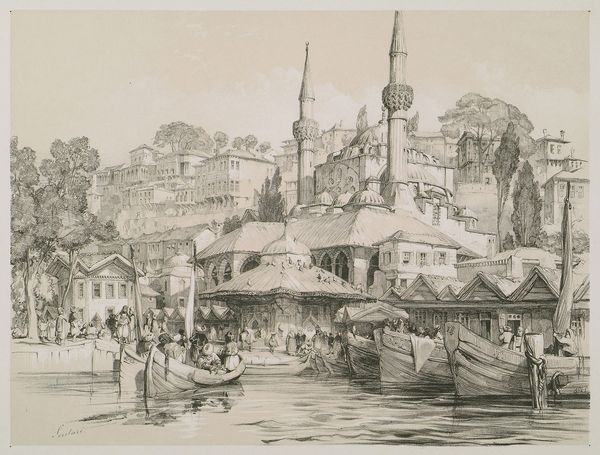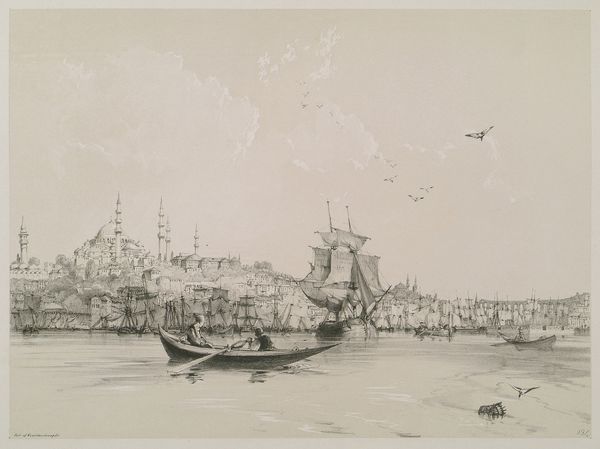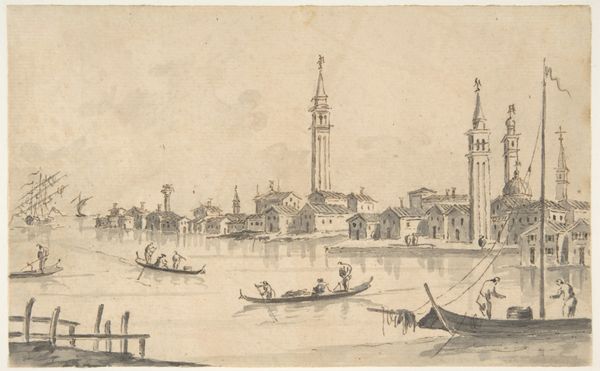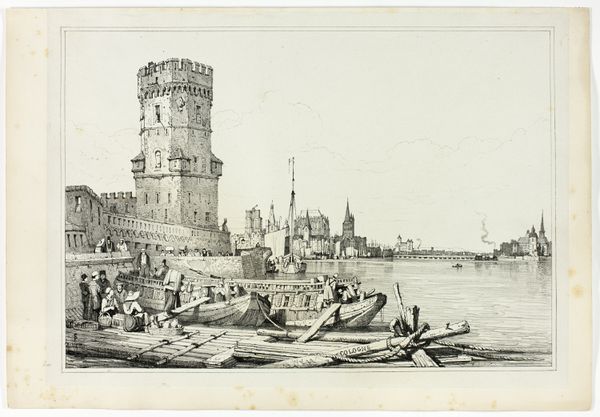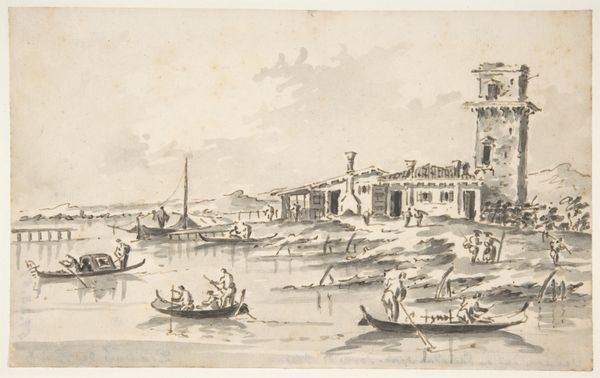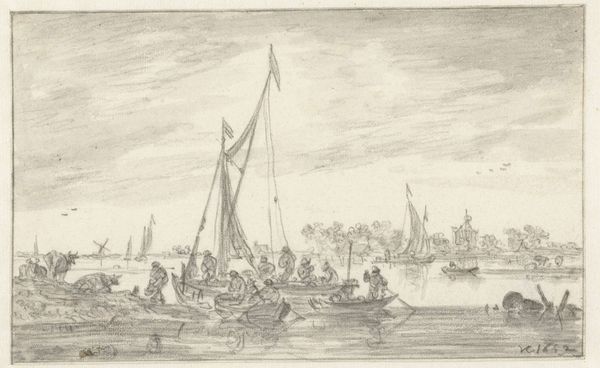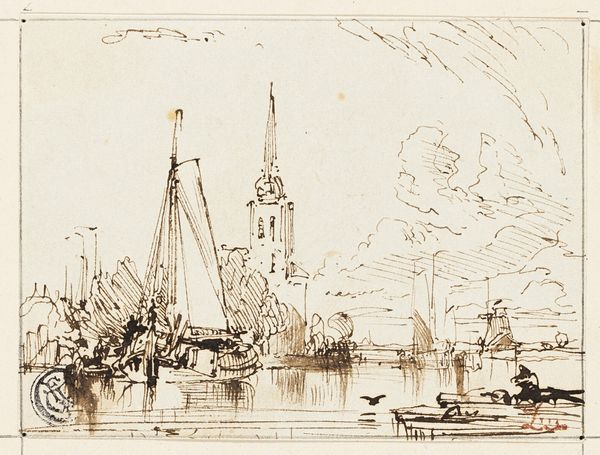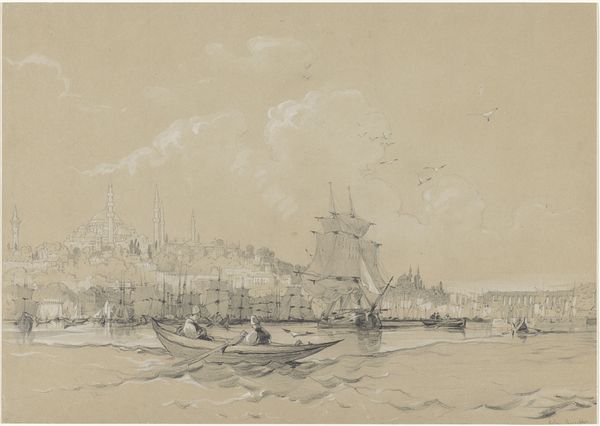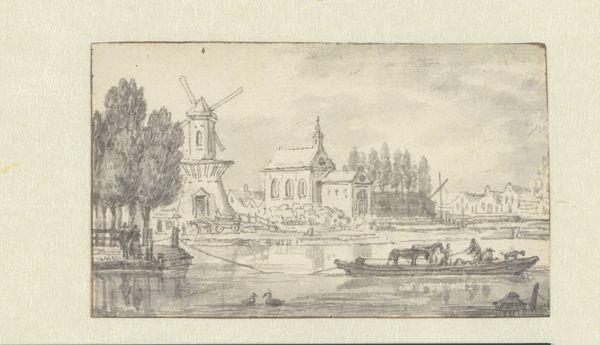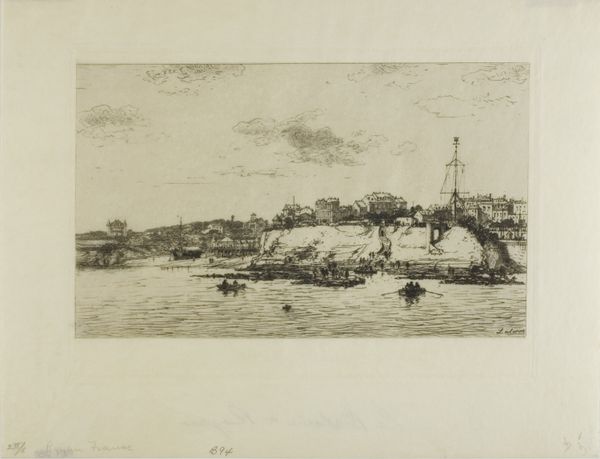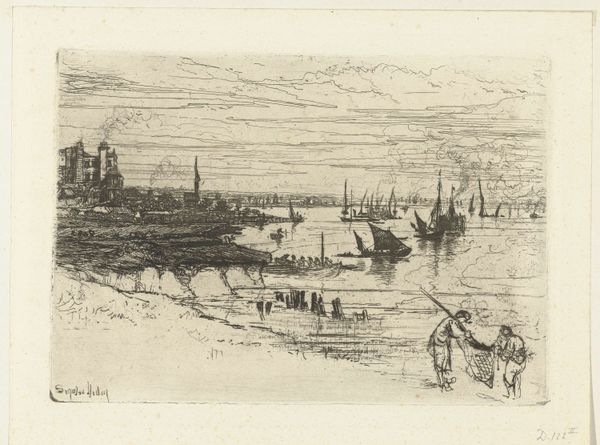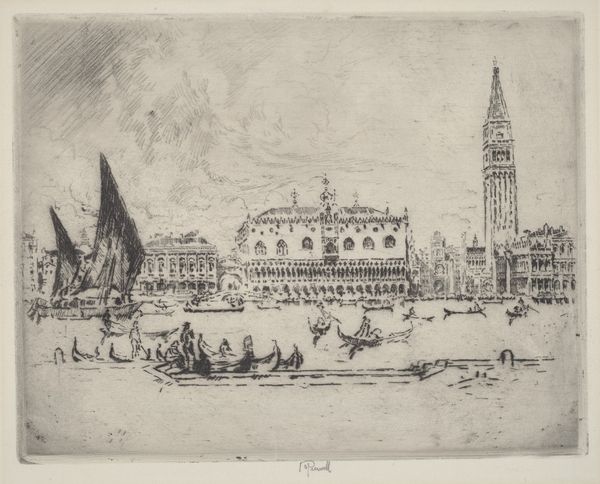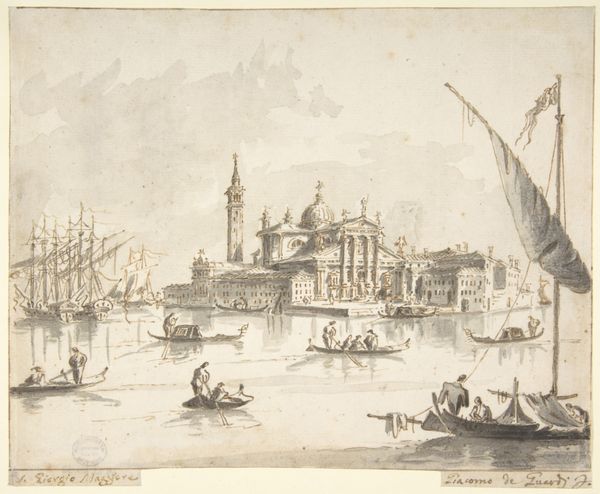
drawing, ink
#
drawing
#
pencil sketch
#
landscape
#
charcoal drawing
#
ink
#
romanticism
#
orientalism
#
watercolour illustration
#
watercolor
Copyright: Public domain
Curator: Here we have "Tophana," a work created by John Frederick Lewis around 1838. The piece uses ink and watercolor to depict a bustling scene along the waterways of Istanbul. What are your initial thoughts? Editor: I’m struck by the artist's skill in rendering the atmosphere. The tonality and soft focus create a feeling of dreamy timelessness—an idealized past, really. Curator: Absolutely. And it's important to consider Lewis's position as a Western European artist engaging with the "Orient." We must question his interpretation. How does his personal identity as an outsider inform his artistic choices? Who is represented, and more crucially, who is excluded, from this picturesque depiction of Ottoman life? Editor: Setting aside, for a moment, the complex cultural dynamics at play, there’s a definite aesthetic mastery here. Look at the density of marks building up the shadowed areas versus the broad untouched washes that give depth to the sky. The light reflecting off the water feels particularly true. Curator: Precisely, this attention to detail—in clothing, architecture— speaks to Orientalism's desire for authenticity. The composition itself, with the mosque juxtaposed against everyday life, reinforces the trope of the exotic other. Consider also the absence of overt social or political commentary. Lewis provides a picture perfect vision, that serves to flatten the complex realities of the Ottoman Empire into a marketable commodity. Editor: But can’t we also see this as a careful study of form and light, rendered with considerable skill? There’s a dynamism achieved through the varied line weights. The human figures have weight, and texture… the buildings are precisely described… Curator: Of course. It’s a balancing act. To appreciate the technical skill while simultaneously analyzing the embedded power structures is the real task before us as viewers and historians. It is about more than just aesthetic value, we have a moral obligation to bring attention to social injustices that occur and affect society. Editor: Well, this piece has certainly presented us with much to consider, from technique to the intricate web of cultural meaning. Curator: Indeed. Examining "Tophana," through an intersectional lens reminds us of the need to deconstruct narratives that perpetuate stereotypes. It invites further examination.
Comments
No comments
Be the first to comment and join the conversation on the ultimate creative platform.
